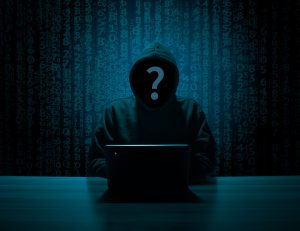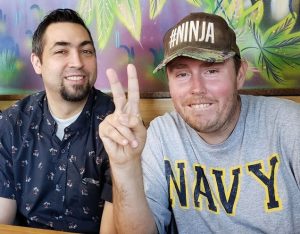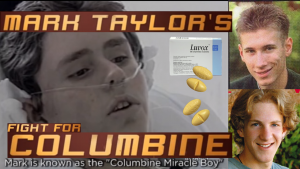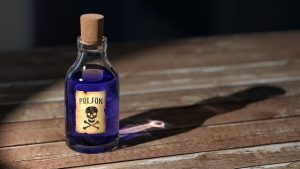Columbine Report Stirs Anger
(CBS/AP) Authorities had at least 15 contacts with the Columbine High School killers dating back two years before their murderous attack, the state attorney general said Thursday in a report that angered families of the victims.
DENVER, Feb. 26, 2004
Columbine Report Stirs Anger
State AG: Authorities Had 15 Contacts With The Killers
By Jarrett Murphy
(CBS/AP) Authorities had at least 15 contacts with the Columbine High School killers dating back two years before their murderous attack, the state attorney general said Thursday in a report that angered families of the victims.
Attorney General Ken Salazar also said he is investigating whether authorities tried to cover up what they knew about the rampage. However, he did not blame the Jefferson County sheriff’s office for missing warning signs about Eric Harris and Dylan Klebold, and said he found no evidence of negligence.
But the attorney general said his investigation is not complete and has grown since he was asked to look into contacts between the killers and investigators beginning in 1997, two years before the attack.
Salazar said his staff interviewed two former sheriff’s officials just this week. He also said authorities are still trying to find a file detailing a search warrant affidavit for Harris’ home after a pipe bomb was found along a bike path in 1998 — a search that never took place.
“We are still looking for that file,” Salazar said.
Asked if he thought there was a cover-up, he said: “I do not know today.” Speaking in a room with somber families of the dead staring at him from the back wall, Salazar promised to issue a supplemental report.
Harris, 18, and Klebold, 17, killed 12 students and a teacher before taking their own lives at the school near Littleton on April 20, 1999. It remains the deadliest school shooting in U.S. history.
“In the end, none of the many efforts to open up the Columbine records, including today’s activity, will mean much beyond passing curiosity if we cannot learn from this tragedy,” Salazar said at a news conference.
Salazar said his investigators looked at how sheriff’s officials reacted to 1997 complaints about Harris, from a thrown snowball that cracked a car window to a prank telephone call.
There were more ominous signs, too: Authorities have said an anonymous tip that year led a deputy to a Web site run by Harris that said the two teens had built pipe bombs and concluded: “Now our only problem is to find the place that will be ‘ground zero.”‘
Family members said Salazar’s report failed to give them the answers they crave.
“This raises more questions than it answers,” said Dawn Anna, whose daughter, Lauren Townsend, died at Columbine. “I would disagree that there was no negligence.”
Nearby, more than 150 people lined up to view a vast and chilling display of evidence — the murder weapons, bullet fragments, the chairs and tables where the victims were gunned down.
The collection includes computer screens, shell casings and pieces of clothing sealed in bags. It features everything from the guns the teenage attackers used to kill classmates, to the furniture from the cafeteria where many died, to arrest and autopsy reports, reports CBS News Correspondent Bob McNamara.
There are also amateur videos of Harris and Klebold, similar to the chilling images released last year of the pair practicing with their deadly arsenal six weeks before the school attack.
A message board put up in a school window that day still says in blue Magic Marker: “1 bleeding to death.”
Authorities also released two videos, one of the anxious scene in a park across the street from the school that day, and another, 90-minute compilation of videos made by Harris and Klebold.
Much of the material is headed for the state archives. Relatives of the dead and survivors of the horrific attack saw much of it for the first time in a private viewing Wednesday.
“This new information isn’t likely to change the legal dynamic involved in this tragedy. The lawsuits brought years ago by the family members of victims were either dismissed or settled or both. And I’m not sure there is anything in this newly-released batch of evidence that would permit anyone to reopen their case,” says CBSNews.com Legal Analyst Andrew Cohen.
“Seeing the evidence and information, I think, reinforces the notion that many survivors and family members of victims have — that the authorities missed plenty of opportunities to do more to reign in Eric Harris and Dylan Klebold before they killed all those people. But from a legal perspective, it won’t change a thing — the law in Colorado and elsewhere is very protective of public officials in these sorts of circumstances,” says Cohen.
Darrell Scott, whose daughter Rachel was killed in the massacre, told CBS News Early Show that seeing the evidence was “impossible to fully describe.”
“It was an emotional event for everyone there to walk in and see,” he told the “And probably the most emotional for any one of us would be to see the weapon that killed our child or that killed the teacher.”
A key part of Salazar’s investigation looked at work done by former sheriff’s deputy John Hicks. Sheriff Ted Mink asked Salazar to investigate why a 1997 report by Hicks — found in a folder last October — was never reviewed as part of the probe into the shootings.
Hicks also looked into a 1998 complaint that Harris posted a death threat against a fellow student on the Web site, along with descriptions of pipe bombs he and Klebold built.
Randy and Judy Brown, whose son was named in the threat, reported the information to the sheriff’s office. A warrant was drafted to search Harris’ home, but it was never executed.
Hicks left the department in 2000 and now lives in South Carolina.
Tom Mauser, whose son, Daniel, was killed at the school, said he wanted more details about why the search never took place.
“If we’re going to learn lessons, that’s a key part of it,” he said. “Why did law enforcement stop where it did?”






